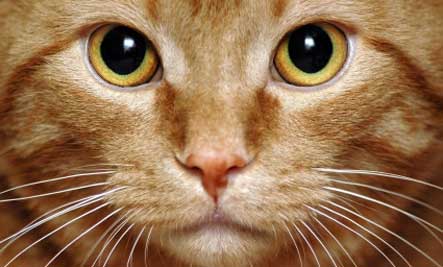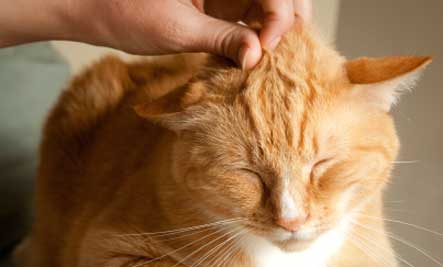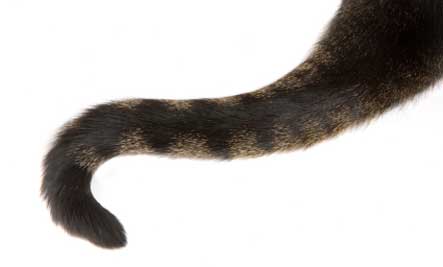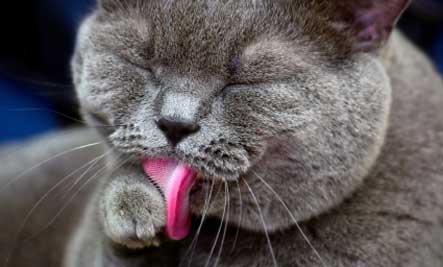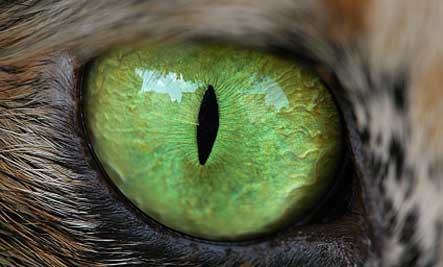Curiosity about cats has followed humankind since the days before Egyptian pharaohs treasured them as signs of good fortune. Much more is known today about what makes these graceful critters tick, yet we are still mesmerized by a cat’s nighttime eyes and find comfort in the mysterious vibration of a gentle purr.
Taken individually, the bits and pieces of cat anatomy and behaviour are a crazy quilt of Morse code, text messaging and DIY survival tips. Together, they are a medley of fun facts that add up to a fur-covered package of intrigue. Let us look at five unusual cat anatomy facts.
1. Whisker Communication
A cat’s whiskers are like a radar guidance system, with a bundle of nerve endings telegraphing details about everything the cat touches, as well as shifts in air pressure. His whiskers are the same width as his body, letting him know whether he will be able to get through a narrow opening or fit behind the TV set.
But whiskers are also navigators. These bristly hairs, found above his eyelids, around his muzzle and on the lower, inside part of his forelegs, help cats move smoothly in darkness. Sensitive to changes in the air current around an unknown object, whiskers enable the cat to avoid the obstacle.
A hunting cat uses its whiskers to zero in on the outline of its prey, letting it know where to strike. Damaged whiskers hamper its aim. A cat’s facial whiskers are also mood indicators. Stiff, forward-pointing whiskers mean the cat is aggressive. An angry cat’s whiskers are tightly pulled back against its face. And a contented cat’s whiskers are picture-perfect, forward, with a slightly downward angle.
2. Purr-fection
The thrumming, rumbling sound coming from a cat as she inhales and exhales is one of life’s great delights — and mysteries. Theories about purring are as varied as the markings on a piece of batik. Domestic cats purr when they are content, often when we are stroking their chins or heads, or opening a can of food. Mother cats purr so their helpless newborn kittens can find them (and the source of dinner), and often purr while nursing. But cats also purr in times of stress — when they are recovering from an injury, or at the vet’s office. Some cats purr so loudly during a checkup, the vet cannot clearly hear the cat’s heartbeat through his stethoscope.
Scientists say that a cat’s purr results from intermittent signaling by the diaphragmatic (diaphragm) and laryngeal (larynx or voice box) muscles, at a frequency of 25 to 150 Hertz (a Hertz being one cycle per second). Research suggests that sound frequency of this range can promote healing and bone growth. There is no definitive answer yet, and the power of the purr is still a puzzle. Clinically, we may know how cats purr, but why? They may purr simply because…they can.
3. Tale of the Tail
A cat’s tail, which contains almost 10 percent of his bones, acts as a counterweight in helping him keep his balance while walking along a narrow space or making sudden turns. But besides working as a rudder, a cat’s tail communicates his mood and messages. Decoding tail talk is one of the easiest ways to read feline body language.
A relaxed cat’s tail moves gently, occasionally, side to side, signaling that he’s up for a little attention. With his tail held high and straight, a cat says he is in charge and happy. If the tip quivers slightly, the cat is irritated. A quick lashing motion, sometimes accompanied by flattened ears, is a sign that your cat wants to be left alone, and may attack if you continue petting him.
When a cat is at play or watching birds out a window, his crouched posture, with the tail flicking back and forth, mimics the behaviour of a big cat stalking its prey. If a cat’s tail is straight up and bristled, he is alert and ready to attack. A fluffed out, lowered tail signals fear. And a tail lightly brushing or wrapping around your legs spells affection and approval.
4. The Rough Side of the Tongue
If you have received a loving lick from your cat, you know that sweet pink tongue feels like rough-grade sandpaper or Velcro caressing your skin. And a jungle cat’s tongue is even harsher. All feline tongues, from tabby house pets to 272 kilogramme Bengal tigers, are covered with tiny barbs or hooks, giving the tongue a rough texture. These microscopic projections face toward the cat’s throat, and are the tools that help to groom his coat. The barbs work like a comb, catching and cleaning the cat’s fur. In the wild, these rasps tear the flesh off the bones of the big cat’s prey.
Cats’ tongues may be the busiest part of their anatomy. They lick their coats not only to keep clean, but to regulate their body temperatures, fluffing up the fur in winter and wetting it down with saliva to stay cool in summer.
As cats’ tongues work, they collect flakes of skin, loose fur, fleas and dirt. Cats swallow this debris — which is usually dissolved by stomach acid. Some cats, especially long-haired or older ones, may ingest too much hair to dissolve, and upchuck hairballs. Giving your cat hairball ointment will help him digest the hair he or she swallows.
5. Eyes That Glow in the Dark
Green, gold, blue or yellow, cats’ eyes are fascinating orbs that gleam in darkness. Think of the famous Cheshire cat, whose eyes and grin taunted Alice in Wonderland. Use a flashlight beam to observe your cat in a darkened room. That spooky shine is visible even in dim light.
Cats’ eyes have pupils that are larger than humans’, and are controlled by a pair of shutter-like ciliary muscles, creating the cat’s distinctive slit-like pupil in bright light. In darkness, light hitting feline eyes is reflected from a mirror-like membrane behind the retina. This structure is called the tapetum lucidum, and is present in the eyes of cats, dogs, some fish and birds, and other nocturnal hunting animals.
When light enters a cat’s eyes, it goes through the retina, where light-sensor cells, called rods and cones, absorb it. Any unabsorbed light reaches the tapetum lucidum and bounces back to the retina, enabling it to take in more light. Animals with the tapetum lucidum have greater night vision because it lets them absorb more light. This is a great help when looking for prey at night. Cats need only about one-sixth of the light humans need to function in the dark.
Adapted from an article on Animal Planet

